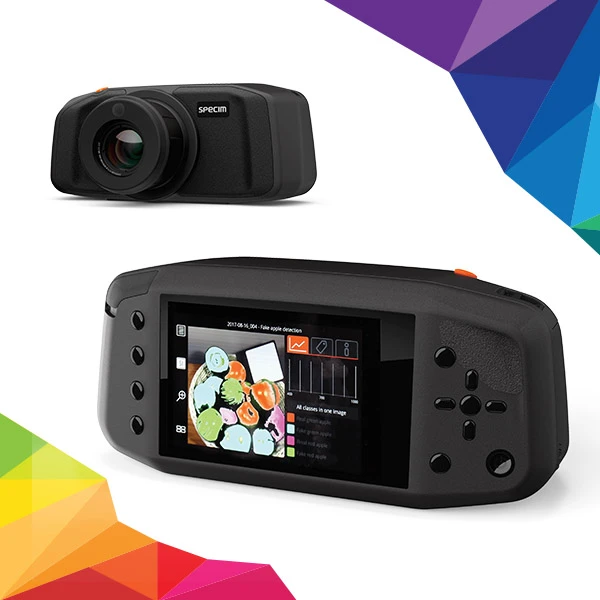คำแนะนำในการเลือกกล้องไฮเปอร์สเปกตรัม

การถ่ายภาพไฮเปอร์สเปกตรัม (HSI)ซึ่งเริ่มแรกใช้สำหรับการสำรวจอวกาศและการสังเกตโลก ได้รับความนิยมเพิ่มมากขึ้นในสาขาอุตสาหกรรมและวิทยาศาสตร์ต่างๆ HSI สามารถจับภาพข้อมูลสเปกตรัมและเชิงพื้นที่ทั้งหมดของเป้าหมายได้พร้อมกัน ซึ่งเป็นการผสมผสานระหว่างการถ่ายภาพดิจิทัลและการวัดสเปกตรัม ด้วยความสามารถ HSI นำเสนอความเป็นไปได้ใหม่ๆ มากมาย และถูกนำไปใช้อย่างรวดเร็วในการวิจัยและการใช้งานทางอุตสาหกรรมต่างๆ ซึ่งรวมถึงอาหารควบคุมคุณภาพ,การศึกษาการเกษตรและพืชพรรณรีไซเคิลพลาสติกและของเสียการเรียงลำดับ,การประกันคุณภาพยา–การวินิจฉัยเนื้องอกผิวหนังฯลฯ
HSI ได้แสดงให้เห็นว่าเป็นโซลูชันที่ใช้งานได้จริงสำหรับการใช้งานหลายๆ อย่าง และหนึ่งในองค์ประกอบสำคัญของระบบ HSI ที่มีประสิทธิภาพคือการมีกล้องไฮเปอร์สเปกตรัมที่เหมาะสมซึ่งจะทำงานได้ดีที่สุดสำหรับงานการวัดของคุณ กล้องไฮเปอร์สเปกตรัลมีหลายประเภท เช่น แนวเส้น ฟิลเตอร์แบบปรับได้ ฯลฯ โดยสามารถแยกความแตกต่างได้ด้วยวิธีการรับและสร้างข้อมูล/ภาพไฮเปอร์สเปกตรัม–
แนวเส้น (Point-Scan)
กล้องไฮเปอร์สเปกตรัมที่ใช้ Whiskbroom จะจับภาพได้ครั้งละหนึ่งพิกเซล โดยทั่วไปแล้ว คิวบ์ข้อมูล Hyperspectral จะถูกสร้างขึ้นผ่านการสแกนแรสเตอร์ทั่วทั้งตัวอย่าง แม้ว่าจะสามารถบรรลุความละเอียดสเปกตรัมสูง แต่ก็มีความเร็วในการรับภาพที่ช้า
ตัวกรองแบบปรับได้
กล้องไฮเปอร์สเปกตรัมแบบฟิลเตอร์ที่ปรับได้จะบันทึกข้อมูลเชิงพื้นที่ของแถบความยาวคลื่นสเปกตรัมหนึ่งแถบในแต่ละครั้ง คิวบ์ข้อมูลไฮเปอร์สเปกตรัมถูกสร้างขึ้นโดยการสแกนแถบความยาวคลื่นสเปกตรัมทั้งหมด การรับภาพทำได้รวดเร็ว แต่มักมีปัญหาในการรับสเปกตรัมที่ลงทะเบียนร่วม ส่งผลให้เกิดการประมวลผลข้อมูลที่ซับซ้อน ลายเซ็นสเปกตรัมที่ไม่น่าเชื่อถือ ฯลฯ
สแกนเส้น
กล้องไฮเปอร์สเปกตรัมแบบ pushbroom ให้การรับภาพที่รวดเร็วและความละเอียดสเปกตรัมสูง และเหมาะสำหรับการใช้งานออนไลน์ เช่น การตรวจสอบอาหาร ฯลฯ โดยจะจับพิกเซลหนึ่งบรรทัดในแต่ละครั้ง และสร้างคิวบ์ข้อมูลไฮเปอร์สเปกตรัมโดยการสแกนเส้นที่พาดผ่านตัวอย่าง . เนื่องจากแถบสเปกตรัมทั้งหมดถูกสแกนพร้อมกันจากตำแหน่งเดียวกัน จึงไม่มีปัญหาในการบรรลุสเปกตรัมที่ลงทะเบียนร่วม

นอกจากการเลือกกล้องไฮเปอร์สเปกตรัมที่เหมาะสมแล้ว ยังมีปัจจัยอื่นๆ เช่นช่วงสเปกตรัมการส่องสว่าง, ประสิทธิภาพการรวบรวมแสง ฯลฯ ควรได้รับการพิจารณาก่อนที่จะตั้งค่าระบบ HSI ตรวจสอบสิ่งนี้แนะนำเพื่อเรียนรู้เพิ่มเติม
Specim ผู้บุกเบิกและผู้นำระดับโลกในด้านเทคโนโลยี HSI มีกล้องไฮเปอร์สเปกตรัมที่ใช้ไม้กวาดให้เลือกมากมาย เช่น Specim IQ series ฯลฯ ซึ่งครอบคลุมช่วงความยาวคลื่นสเปกตรัมตั้งแต่ที่มองเห็นไปจนถึงอินฟราเรดความยาวคลื่นยาว (LWIR) วิดีโอเพื่อการเรียนรู้เพิ่มเติมเกี่ยวกับวิธีการทำงานของกล้องไฮเปอร์สเปกตรัมที่ใช้ Specim pushbroom
หากต้องการเรียนรู้เพิ่มเติมเกี่ยวกับ HSI หรือต้องการความช่วยเหลือในการนำระบบ HSI ไปประยุกต์ใช้กับงานของคุณ สามารถติดต่อเราเพื่อรับคำปรึกษาฟรีกับผู้เชี่ยวชาญของเรา
